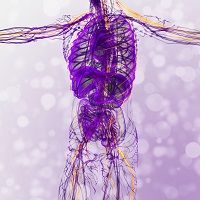Updated Malignant Hyperthermia Guidelines
Malignant hyperthermia is a potentially fatal disorder usually associated with administration of certain general anesthetics and/or succinylcholine. Until 30 years ago, its etiology was unknown. Then, researchers found that people who carry an autosomal dominant calcium channel mutation are at elevated susceptibility.

Malignant hyperthermia (MH) is a potentially fatal disorder usually associated with administration of certain general anesthetics and/or succinylcholine. Until 30 years ago, its etiology was unknown. Then, researchers found that people who carry an autosomal dominant calcium channel mutation are at elevated susceptibility.
The European Malignant Hyperthermia Group (EMHG) published the first consensus protocol addressing malignant hyperthermia laboratory testing n the 1990a and in 2001, followed it with a guideline for DNA-based screening of MH susceptibility. Earlier in 2015, they presented a diagnostic pathway update in the British Journal of Anaesthesia.
Globally, EMHG’s guidelines have been used to help more than 10,000 people who are at risk for MH. For these people, general anesthesia can lead to a skeletal muscle metabolic crisis. Calcium builds in this tissue and may progress to a fatal hypermetabolic state or MH crisis.
MH affects children and young adults of all races, but males are affected 2.5 to 4.5 times more often than females. Experts estimate that 1 in 2,000 individuals are susceptible, but also indicate MH’s prevalence is probably much higher. Many susceptible people never receive an MH- triggering drug, so they do not develop MH and remain unidentified. MH is also unpredictable. Susceptible individuals may receive anesthesia several times with no problem, but react on a subsequent exposure. Some susceptible people may experience mild symptoms episode—MH develops on a spectrum of severity—and diagnosis is missed.
Most important, MH is an autosomal-dominant condition in humans, so its prevalence is increasing.
The previous guideline recommended muscle biopsy and an in vitro contracture test (IVCT) for possible cases, and mutation screening if the IVCT confirmed MH susceptibility. Very few centers are capable of performing the test (only four in the United States and 30 in the entire world). The new guideline identifies DNA screening to be a viable primary diagnostic approach to the IVCT.
IVCT is conducted using caffeine or halothane, and the previous guideline did not differentiate between these. The update changes the classification of patients, with abnormal responses to either or both caffeine and halothane tests designated MHS. The new classification adds a suffix indicating abnormal response to halothane (h) or caffeine (c). This results in 4 diagnostic groups: MHShc (formerly MHS); MHSh (formerly MHE); MHSc (formerly MHE); and MHN (unchanged).
Fortunately, most surgeons never see a case of MH in the surgical suite. Knowing its signs and management approaches is critical regardless. This guideline demonstrates how far we’ve come from the 1970s and 1980s, when up to 80% of patients who developed this crisis died. Today, most patients survive. Additional information is available from The Malignant Hyperthermia Association of the United States (MHAUS).